Papal Sora
In 1579 Pope Gregory XIII acquired the duchy for 100,000 scudi , assigning it to his son Giacomo Boncompagni. The duchy was also at this time enlarged by the acquisition of Aquino and Arpino, becoming a truly autonomous seigniory only nominally dependent on the Kingdom of Naples. The creation of an independent state in southern Lazio had been managed by cardinal Francesco Maria Del Monte to counterbalance the expansion of the House of Farnese. Giacomo married Costanza Sforza, who embellished the duchy with buildings, gardens and schools. The Dukes promoted local industry by installing textile factories in Arpino and Sora and a paper industry along the Liri River. They also founded a new town, Colle Drago, but after Giacomo and his successor Gregorio I, the financial difficulties of the family, caused by such expensive projects, prevented further efforts.
At the death of duke Giovan Giacomo (1636), his brother Ugo had to face the popular rebellion of the brigand Papone, a follower of the republicanism of Masaniello. He occupied Sora and Cassino and formed a popular government. Ugo was succeeded by his son Gregorio II, who married Ippolita Ludovisi, who added to his lands the principality of Piombino. The union of the Boncompagni and Ludovisi families as the Boncompagni-Ludovisi largely resolved their economical difficulties, but at that time the duchy was facing increased custom taxes imposed by the Papal States on its merchants. Gregorio II's successor, Antonio I, died in 1731, leaving his lands to his son Gaetano, who relaunched a policy of social and economical improvements in the Liri Valley, as well as the embellishment of Colle Drago.
The last Duke was Antonio II, who ceded his state to King Ferdinand IV of Naples in 1796. The Princes Boncompagni Ludovisi are still the titular Dukes.
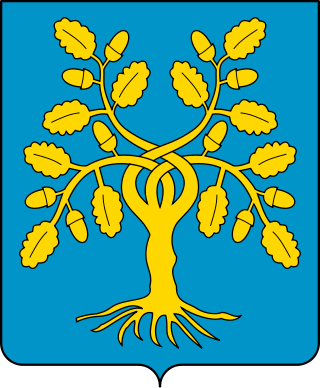
The House of Della Rovere was a powerful Italian noble family. It had humble origins in Savona, in Liguria, and acquired power and influence through nepotism and ambitious marriages arranged by two Della Rovere popes: Francesco Della Rovere, who ruled as Sixtus IV from 1471 to 1484 and his nephew Giuliano, who became Julius II in 1503. Sixtus IV built the Sistine Chapel, which was named after him. Julius II was patron to Michelangelo, Raphael and many other Renaissance artists and started the modern rebuilt of St. Peter's Basilica. Also the Basilica of San Pietro in Vincoli in Rome was the family church of the Della Rovere. Members of the family were influential in the Church of Rome, and as dukes of Urbino, dukes of Sora and lords of Senigallia; the title of Urbino was extinguished with the death of Francesco Maria II in 1631, and the family died out with the death of his granddaughter Vittoria, Grand Duchess of Tuscany.

Sora is a town and comune of Lazio, Italy, in the province of Frosinone. It is built in a plain on the banks of the Liri. This part of the valley is the seat of some important manufacturing, especially of paper mills. The area around Sora is famous for the costumes of its peasants.

Arce is a comune (municipality) in the province of Frosinone, in the region of Lazio, Italy. it is an agricultural centre located on a hill overlooking the Via Casilina, in the Latin Valley and in the middle valley of the Liri.

Isola del Liri is an Italian town of Lazio, Italy, in the province of Frosinone. As its name implies, Isola is situated between two arms of the Liri. The many waterfalls of this river and of the Fibreno are used by factories.
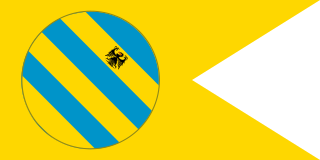
The Duchy of Urbino was an independent duchy in early modern central Italy, corresponding to the northern half of the modern region of Marche. It was directly annexed by the Papal States in 1631.

The House of Boncompagni is a princely family of the Italian nobility which settled in Bologna in around the 14th century, but was probably originally from Umbria.

Giacomo Boncompagni was an Italian feudal lord of the 16th century, the illegitimate son of Pope Gregory XIII. He was also Duke of Sora, Aquino, Arce and Arpino, and Marquess of Vignola.

The Lordship of Piombino, and after 1594 the Principality of Piombino, was a small state on the Italian peninsula centered on the town of Piombino and including part of the island of Elba. A vassal of the Kingdom of Naples associated with the State of the Presidios and a territory of the Holy Roman Empire formed from the remnants of the Republic of Pisa, it existed from 1399 to 1805, when it was merged into the Principality of Lucca and Piombino. In 1815 it was absorbed into the Grand Duchy of Tuscany.

Ippolita I Ludovisi was the Princess of Piombino, Marchioness of Populonia, Princess of Venosa and Countess of Conza, Lady di Scarlino, Populonia, Vignale, Abbadia del Fango, Suvereto, Buriano, Cerboli e Palmaiolan, and Lady princess of the Tuscan Archipelago including the islands of Elba, Montecristo, Pianosa, Gorgona, Capraia, and Isola del Giglio from 1701 until her death in 1733.
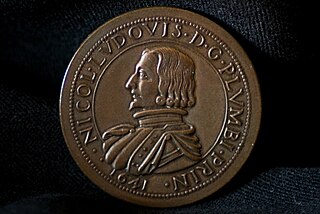
Niccolò I Ludovisi, 2nd Duke of Fiano and Zagarolo, was Prince of Piombino, Marquis of Populonia, Prince of Venosa and Count of Conza, Lord di Scarlino, Populonia, Vignale, Abbadia del Fango, Suvereto, Buriano, Cerboli e Palmaiolan, and Lord prince of the Tuscan Archipelago including the islands of Elba, Montecristo, Pianosa, Gorgona, Capraia, and Isola del Giglio from 1634 until his death.

Francesco Maria II della Rovere was the last Duke of Urbino.

Giovanni della Rovere was an Italian condottiero. He was a nephew of Pope Sixtus IV, and the brother of Giuliano della Rovere (1443–1513), Pope Julius II from 1503.

The Duchy of Alvito was a fiefdom of the Kingdom of Naples, in southern Italy.
Maria Eleonora I Boncompagni (1686–1745) was the Princess of Piombino, Marchioness of Populonia, Princess of Venosa and Countess of Conza, Lady di Scarlino, Populonia, Vignale, Abbadia del Fango, Suvereto, Buriano, Cerboli e Palmaiolan, and Lady princess of the Tuscan Archipelago including the islands of Elba, Montecristo, Pianosa, Gorgona, Capraia, and Isola del Giglio, from 1733 until her death.
Isoletta is a village in Italy, in the Valle Latina within the Arce municipality. Isoletta is located in the province of Frosinone, of the southern Lazio region in Italy.
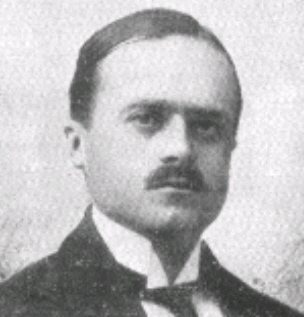
Don Francesco Antonio Maria, Prince Boncompagni-Ludovisi, Prince of Piombino, Duke of Sora, etc, was an Italian politician.
Don Girolamo Boncompagni was a Roman Catholic cardinal.
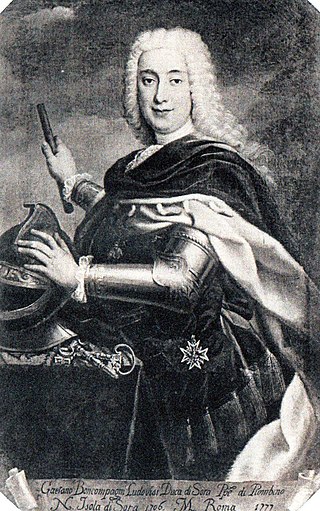
Gaetano I Boncompagni Ludovisi (1706–1777) was VII Duke of Sora and the Prince of Piombino, Marquis of Populonia, Prince of Venosa and Count of Conza, Lord di Scarlino, Populonia, Vignale, Abbadia del Fango, Suvereto, Buriano, Cerboli e Palmaiolan, and Lord prince of the Tuscan Archipelago including the islands of Elba, Montecristo, Pianosa, Gorgona, Capraia, and Isola del Giglio, from 1745 until 1777.
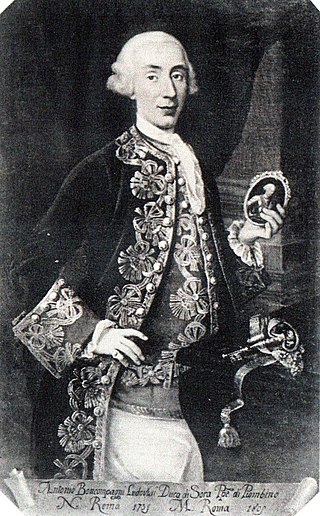
Don Antonio II Boncompagni-Ludovisi, then Prince Boncompagni-Ludovisi, was the 8th Duke of Sora, Aquino, Arce and Arpino and 9th Marquess of Vignola and the Prince of Piombino, Marquis of Populonia, Prince of Venosa and Count of Conza, Lord di Scarlino, Populonia, Vignale, Abbadia del Fango, Suvereto, Buriano, Cerboli e Palmaiolan, and Lord prince of the Tuscan Archipelago including the islands of Elba, Montecristo, Pianosa, Gorgona, Capraia, and Isola del Giglio, from 1733 until he ceded the duchy in 1796 and was deposed in the principality on 21 March 1801 and in the marquessate during the Napoleonic Wars.

Antonio I Boncompagni was an Italian nobleman and the 6th Duke of Sora. By his marriage, he also was Prince-Consort of Piombino.


















